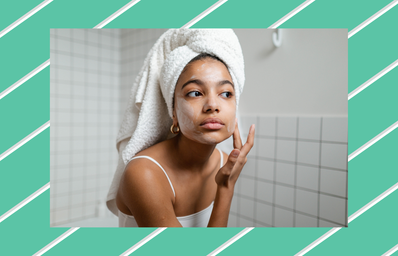One snowy night, many weeks ago, I looked into my bathroom mirror before going to bed and realized that my skin looked absolutely horrible. My face had dry patches all over it, I had a tiny rash on my eyebrow bone region and small patches of hormonal acne had claimed sovereignty on my forehead, cheek and chin. My skin tingled when I tried to use any type of active ingredient on my face. This prompted my weekend-long search to see what I could do to remediate my red, angry skin. At last, I found the answer: slugging. You’ve probably heard the word on TikTok or Twitter in the last few months, but if you have not, here’s the gist. Slugging comes from the K-beauty world and it involves putting a thin layer of petroleum jelly on your face to preserve moisture. The term comes from looking like a greasy snail after slugging.
How does slugging work? Basically, slugging is coating your face in a thin layer of occlusive moisturizer after completing your nightly skin care routine. An occlusive is a moisturizer that creates a barrier on your face and locks in moisture. Most occlusives are non-comedogenic, meaning they do not clog your pores when you use it.
So, how does using an occlusive help your skin? It helps to heal your skin barrier. Your skin barrier is the top layer of your skin that is majorly related with how your skin feels and looks. Your skin barrier can be damaged due to the use of strong active agents, UV rays and pollution. When your skin barrier is damaged, your skin will always feel irritated, flaky and red. Personally, my biggest problem was overusing active ingredients such as glycolic acid, BHA and AHAs, which unknowingly destroyed my skin barrier. Slugging, however, can help rebuild you skin barrier by providing a moisturizing environment and locking in that moisturizer.
My biggest piece of advice with choosing what products to use for slugging includes finding an occlusive in a tube, rather in a tub. This way there is less bacteria transfer between the product and your skin. For example, if you use a tub of Vaseline, unless you are washing your hands before sticking your hands into the tub, you are transferring bacteria from your fingertips into that tub.
- CeraVE Healing Ointment
-
This is what I use currently. The healing ointment includes ceramides, hyaluronic acid and petroleum, which are all great ingredients for your skin barrier. It is non-comedogenic and lightweight. I like this product a lot because I can squeeze a pea-sized amount easily without squeezing too much out and it is in a tube!
- Neutrogena Hydro Boost Water Gel
-
This gel is very lightweight to the point where you can wear this during the day without looking greasy. This option is the best for those who have oil/acne prone skin because there are no irritating ingredients in the formula. As well as it is moisturizing, while not adding extra oil to your face.
- Vaseline Petroleum Jelly
-
Vaseline is the most basic way to start off slugging. It is a cheaper alternative than the other two options and there are other uses for it if slugging does not work out for you. Just remember to wash your hands before using it to prevent bacteria transfer!
The best time to slug is overnight. While you sleep, your skin works hard to repair itself. To maximize slugging’s benefits, try to finish your whole skin routine an hour before going to bed so everything can absorb into your skin before it is all rubbed onto your pillowcase.
- Go through your whole night skincare routine.
-
For me, my routine includes serums, retinol and moisturizer. However, do not use any of your face oils or spot treatments.
- When your skin is slightly damp from your skincare routine, take some petroleum jelly and spread a pea-sized scoop onto your face.
-
When your skin is slightly damp from your skincare routine, take some petroleum jelly and spread a pea-sized scoop onto your face. Remember, you do not need a thick layer, as long as your face is covered, you are good!
- In the morning, use a face wash to remove the remaining contents of your nightly slugging.
-
Then continue with your morning routine!
I have been slugging for about two months now and I have to say it has repaired my skin barrier the best, especially when compared to just using different moisturizers. Even though my skin barrier is on its way to be repaired, I still slug to prevent any irritation from using retinol. I feel like slugging is a cheaper and more convenient alternative than spending a lot of money on high-end serums. I hope slugging works for you! Happy slugging!


